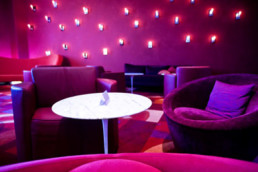Deck the Halls with LED Lights!
There are several excellent reasons to switch from incandescent to LED holiday lights; the first is the reduced electrical usage. LED string lights use about 80-90% less energy than traditional incandescent bulbs and last up to 100,000 hours versus 3000 hours for an incandescent, which takes the pain out of the post-holiday energy bills. In addition, most LED’s light strands burn just as bright as incandescent bulbs, if not more brightly, but make sure you buy LEDs in the color you want as some can give off a bright bluish glow.
One of the most popular reasons buyers will choose to migrate to LEDs is that LEDs do not burn out; they simply fade over time, so gone are the days of trying to find those small replacement bulbs and plug them into a strand of dead lights. The hassle of trying to determine which light is the ‘dead light’ when the whole strand goes out is now in the past. The bonus is that LEDs are solid-state lights (SSLs) that are difficult to damage with physical shock than its fragile bulbs of its predecessor, which uses a filament encased in a glass bulb.
So this year, as you untangle your lights and light up your snowman, step back and admire your decorations with a hidden satisfaction that you made a small difference not only to the environment and reducing your energy bills but also to make your future decorating years that much easier.
It is critical to use the appropriate LED measurement equipment and accessories when evaluating a LED various photometric and radiometric quantities. Learn more about LED’s measurement accessories offered by Konica Minolta Sensing and Instrument Systems, including, but not limited to, our CAS 140D spectroradiometer, Optical Probes, and Ledgon 100 goniometer ideal for automatic determination of all the relevant photometric parameters of single LEDs or small LED modules. Besides the visible range, its usage extends from 200 nm in UV to 2150 nm in IR.
Instrument Systems has LED test sockets that can meet your requirements, whether you are looking to measure the average LED’s intensity or high-power LEDs.










